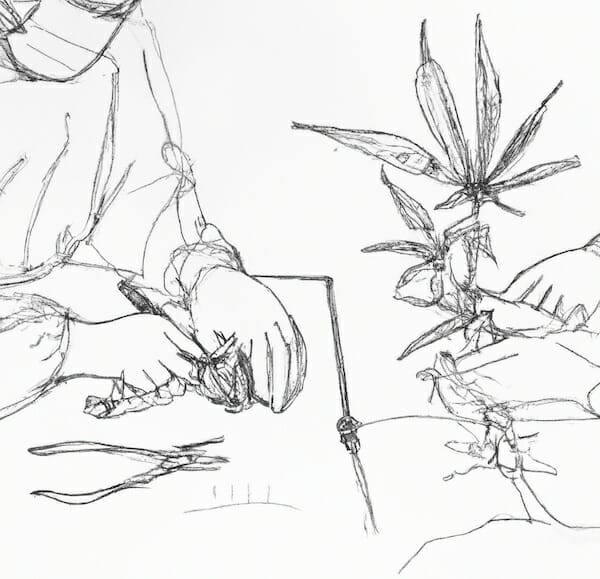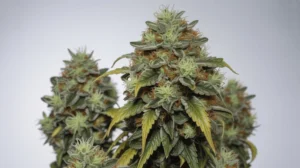The Ultimate Guide to Cannabis Cloning: How to Make Weed Clones | SeedsHereNow.com

Mastering the Art of Cannabis Cloning: A Step-by-Step Guide | SeedsHereNow.com
Cannabis cloning is a popular and effective method of propagating your favorite strains. By mastering the art of how to make pot clones, you can enjoy a steady supply of your preferred plants while maintaining their genetic integrity. In this comprehensive guide, we’ll delve into the nitty-gritty of cloning cannabis plants, offering insider tips and strategies to ensure success. Buckle up and let’s dive in!
Cloning Cannabis 101: What’s the Big Deal?
Why Clone Cannabis?
- Maintain genetic consistency: Cloning guarantees that the new plants will have the same characteristics as the mother plant, ensuring a stable product.
- Save time and money: Cloning is faster and more cost-effective than growing plants from seeds, as it skips the germination stage.
- Continuous harvest: With a cloning setup, you can ensure a constant supply of your favorite cannabis strains.
The Science of Cloning: How It Works
The process of cloning involves taking a cutting from a mother plant and encouraging it to develop roots, effectively creating a genetically identical offspring. The key to successful cloning lies in providing the right environment for root development, which we’ll explore in detail throughout this guide.
Preparing for the Cloning Process: Tools and Techniques
Essential Tools for Cloning Cannabis
To make weed clones, you’ll need the following tools and materials:
- A healthy mother plant
- A sharp and sterile scalpel or pruning shears
- Rooting hormone (gel or powder)
- A humidity dome and tray
- Growing medium (such as rockwool cubes or peat pellets)
- A spray bottle with water
- A small container for the rooting hormone
Choosing the Perfect Mother Plant
The success of your cannabis clones relies heavily on the quality of the mother plant. Here’s what to look for in an ideal candidate:
- Healthy and robust growth
- Free of pests and diseases
- At least two months into the vegetative stage
- A proven producer of high-quality cannabis
How to Make Clones: Step-by-Step Guide
Follow these steps to create healthy and thriving cannabis clones:
Step 1: Prepping the Mother Plant
About a week before taking cuttings, flush the mother plant with water to remove excess nutrients. This encourages the clones to focus on root development rather than foliage growth.
Step 2: Taking Cuttings
- Select a healthy branch with at least one node (the point where leaves emerge from the stem).
- With a sterile scalpel, make a 45-degree cut about ¼ inch below the node.
- Immediately place the cutting in water to prevent air bubbles from entering the stem.
Step 3: Applying Rooting Hormone
Dip the cut end of the cutting into the rooting hormone, ensuring that the node is fully covered. This encourages root development and speeds up the process.
Step 4: Planting the Cuttings
Gently insert the cutting into your preferred growing medium, making sure the node is buried. Lightly mist the cutting with water and place it in a humidity dome.
Step 5: The Rooting Environment
Place the humidity dome in a warm, well-lit area with indirect light. Maintain a temperature of 72-78°F (22-26°C) and a humidity level of 70-80%. Open the vents of the dome daily to allow fresh air in and prevent mold growth.
Step 6: Monitoring and Transplanting
Check on your clones daily, misting them with water to maintain humidity. Roots should begin to develop within 7-14 days. Once the roots are visible and well-established, it’s time to transplant your clones into their final growing medium.
Tips and Tricks for Cloning Success
Don’t Neglect Hygiene
Sterilize your tools and work area to minimize the risk of contamination, which can lead to failed clones or unhealthy plants.
Be Patient
Root development can take time. Don’t rush the process or give up on your clones too soon. Patience is key in mastering how to make pot clones.
Keep an Eye on Environmental Factors
Monitor temperature, humidity, and light exposure closely to ensure optimal conditions for root development.
Common Cloning Mistakes to Avoid
- Taking cuttings from unhealthy or stressed mother plants
- Using dull or unsterilized tools
- Over-watering or under-watering clones
- Exposing clones to direct light or excessive heat
Frequently Asked Questions About Cannabis Cloning
1. Can I clone a flowering cannabis plant?
Yes, but it’s not recommended. Clones taken from flowering plants may take longer to root and may not perform as well as those taken from plants in the vegetative stage.
2. How many clones can I take from a single mother plant?
The number of clones depends on the size and health of the mother plant. As a general rule, aim for no more than 20-30% of the plant’s total foliage to ensure the mother plant’s continued health.
3. How long does it take for clones to start flowering?
Once the clones have established roots and been transplanted, they can be switched to a flowering light cycle (usually 12 hours of light, 12 hours of darkness) to initiate flowering.
4. Do I need to use rooting hormone for cannabis cloning?
While not strictly necessary, using rooting hormone can significantly increase the success rate and speed up the rooting process.
5. Can I clone an autoflowering cannabis plant?
Technically, yes. However, autoflowering plants have a predetermined life cycle, and clones taken from them will likely not have enough time to develop before starting to flower.
6. Is cloning cannabis legal?
Laws regarding cannabis cultivation and cloning vary depending on your location. Always check your local regulations before attempting to clone cannabis plants.
Conclusion
Now that you’re equipped with the knowledge and techniques for how to make pot clones, you can confidently embark on your cloning journey. With patience, practice, and attention to detail, you’ll soon have a thriving garden of genetically consistent cannabis plants to enjoy. Happy cloning!
Now go Clone something!
Jb @the_real_james_bean
James Bean, a passionate advocate for hobby growers and homegrown enthusiasts, is the proud owner of SeedsHereNow.com. Established in 2010 in Kenmore, Washington, James has built a reputation for being a humble and dedicated player in the industry, consistently striving to provide the best seed bank in the United States.
Today, James Bean continues to uphold his mission of empowering hobby growers and supporting the homegrown movement by providing an unrivaled selection of high-quality seeds and exceptional customer service. His unwavering passion and commitment have made SeedsHereNow.com the go-to destination for collectors and growers in search of the finest seeds available in the USA.
Suggested Articles
;)
;)
;)




 26 Dec 2025
26 Dec 2025  8 min read
8 min read


 April 27, 2023
April 27, 2023 


RESPONSES (0)
No responses yet. Be the first to respond!